How to Measure and Maximize your Influencer Marketing ROI
.webp)
As the year 2019 was coming to an end, marketers were faced with a disturbing controversy, where most experts started labeling influencer marketing as a thing of the past and something that lay dead in the water. The problem was driven by the fact that many e-commerce entities considered tracking ROI on online investments more challenging than traditional Investments.
We are here to tell you that not only is influencer marketing alive and kicking, but it is also expected to skyrocket shortly. Studies show that the industry is on a trajectory where we will witness it grow by nearly 13.8 billion dollars in a year .
With influencer marketing growing at an accelerated pace, people are also getting smarter. Technology is constantly evolving, which has made tracking the performance of your influencer marketing campaign much more accessible.
Even as we stress the benefits of influencer marketing in this blog, it is estimated that only 67% of brands chose to measure return investment on their online marketing campaigns.
If you have no clue where to start or are part of the 33% who do not yet measure their marketing ROI, then you have come to the right place. We are confident that you will change your mind once you reach the end of this article.
Many brands look for leading influencer marketing agencies in India to create and execute a successful campaign & track its progress.
Here we have listed points that will help you track your Influencer marketing ROI and launch a successful campaign.
- Types of influencer marketing ROI
- What is influencer marketing ROI?
- Know the Impact of your Content
- Campaign Performance
- Channel Performance
- Impact on Business
- What is the importance of ROI
- Determine your campaign goals
- Set Metrics to Measure Your Campaign Performance
- Set Goals and Performance Metrics For Your Influencers
- Finalize a Tool To Track Influencers performance
- Analyze the Performance of Influencers
- How to maximize ROI
Types of influencer marketing ROI
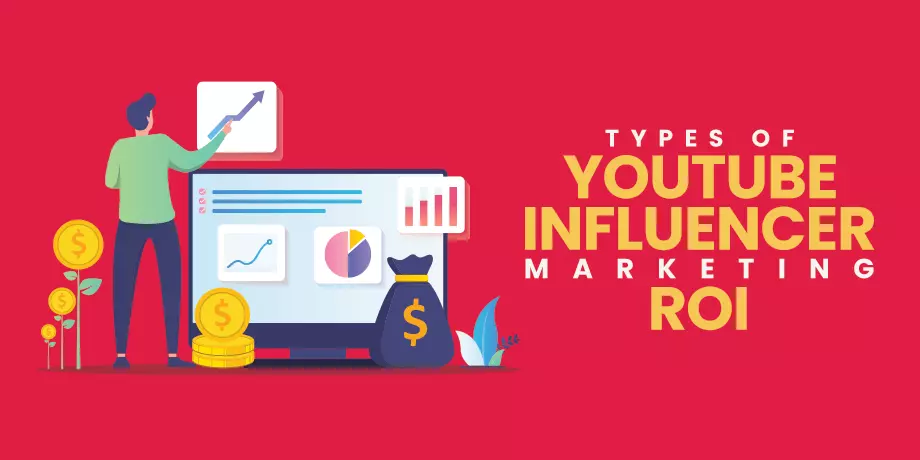
0% ROI: H30% ROI means that you did not make any profit, nor did you incur any loss. You invested X amount for your online campaign and received X amount in revenue.
100% ROI:H3This is a very favorable outcome for you. You invested X sum of money on your influencer marketing campaign and earned 2X amount in revenue.
1000% ROI: H3If you get this outcome, you are doing something very right with your influencer marketing campaign strategy. Here, you invest X sum of money and receive 11X times the amount in revenue.
-100% ROI:H3 You do not want to find yourself in this situation. Something is going very wrong with your influencer marketing approach, and you need to fix it before you move ahead. When you spend X amount and receive 0 in revenue, then you incur a loss.
But, before we go into more detail, here is a formula that you can use to calculate your return on investment. We have also provided an example for the same.
Return on investment = Net return on investment/cost of investment * 100
Let us take an example: Let's say an investor bought 100 shares of XYZ company at $9 per share. One year later, he sold the shares for $12. For holding shares for the entire year, the investor accumulated a dividend of $400. The investor also had to shell out $120 on commission for buying and selling shares.
The ROI is calculated as follows:
ROI = ([($12 - $9) * 100 + $400 - $120] ÷ ($9 * 1000)) X 100
ROI = 0.064 X 100
ROI = 6.4%
What is influencer marketing ROI?
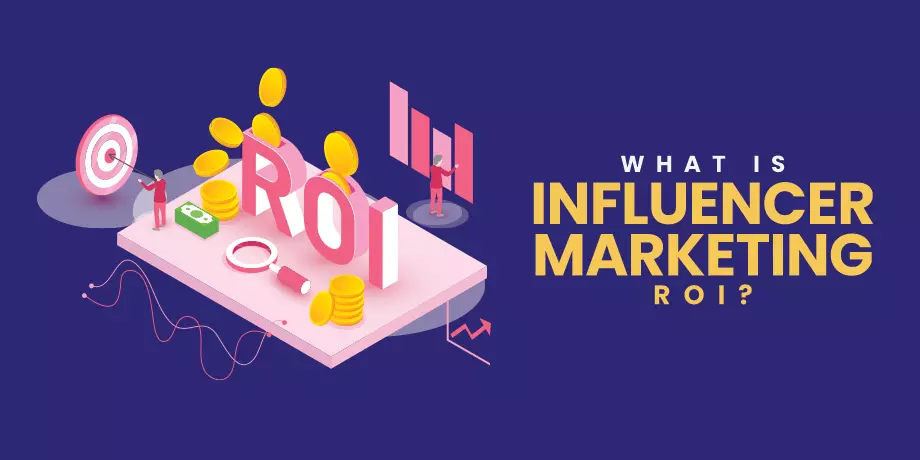
Marketing has existed for decades and so has endorsements. Marketers have always utilized brand association leverage strategy to utilize the power of celebrity in advertising their product, however, things are slightly changing.
But, if there is some change, there is some constant. Endorsement is “Constant” whereas “Change” is that now apart from TV/filmstars, now there are social media influencers that leverage their fan following. Influencer marketing is a marketing technique where brands team up with influencers on social media to promote their products and services. Influencer marketing ROI is the value of profit or loss generated from campaigns concerning the money invested.
The estimates inform marketers if they are getting their money worth or not from the marketing campaigns. A positive return on Investment indicates that you are earning more revenue from your campaign than your campaign investment.
Measurement is important, so you are just throwing your money away on digital activities when you do not measure influencer marketing's average ROI. What we mean is that without measuring your campaign, you won't know if it was successful or not.
Proving Marketing ROI faces inevitable roadblocks. According to TrackMaven, 71.11% of marketers say that lack of adequate social and content revenue is a significant problem. 48.89% say that KPI does not align well with their business goal, which is a hindrance.
Why should marketers focus on ROI
Know the impact of your content

A good marketer has to know which content got high engagement from its viewers, which performed poorly. With this information, you can focus on creating content that works and avoid creating ineffective posts, and hence know the pattern of what content suits your audience.
Campaign Performance

Influencer marketing ROI enables marketers to gauge campaign performance. Companies undertake various marketing campaigns such as E-mail, social media, Pay-Per-click Ads, etc. Company’s need to look at specific metrics to compare revenue generated with investments in the campaign.
Channel performance
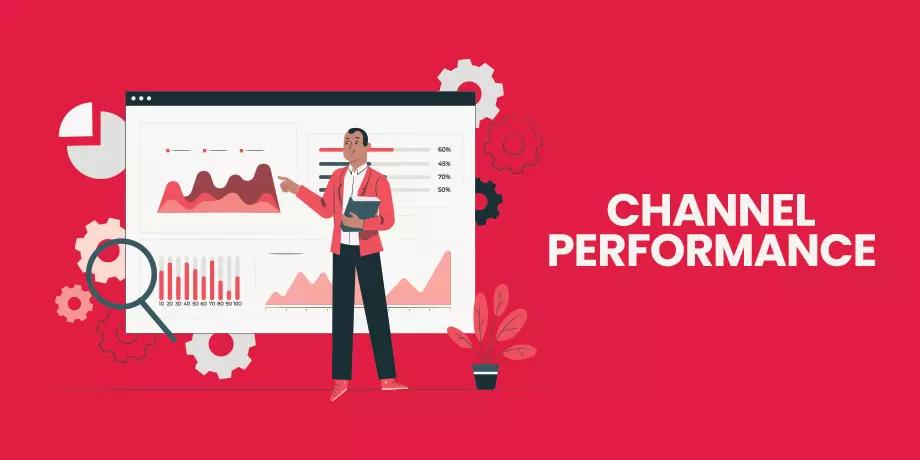
Apart from campaign performance, you can also look at channels that bring maximum visitors that convert to your goals, also look at sources that are not performing well. For channel optimization, increase capital spending on marketing campaigns on channels that give maximum ROI. Consider metrics such as Brand awareness, Conversion rate, and reach.
Impact on Business

After gaining insight into the performance of your channel and campaign, the next step would be to look at your business performance. And you can get valuable insight when looking at Influencer marketing ROI – this will help generate the maximum return from your marketing investment; look at metrics such as growth in revenue, shareholders value, and customer retention.
What is the Importance of ROI
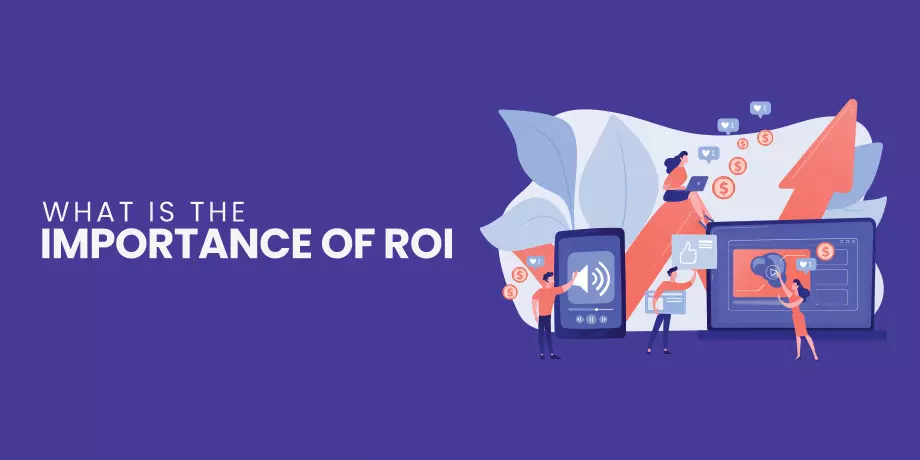
Now, let us see why Influencer Marketing ROI is Important for businesses.
Reveal most effective strategies
Monitoring ROI also helps in knowing what strategies give maximum results and making campaign improvements. When you see what is working and not working, you can use the information to avoid action that yields poor results and undertake activities that give high returns. You can also see which strategy generates the highest returns and requires less Investment. You can quickly know the techniques that are the most profitable to invest in.
Understand audience behaviours
Another reason why influencer marketing ROI statistics is essential – because it allows you to analyze your audience behaviour. Apart from the traffic from your strategies, you can see which approach garnered maximum audience attention by looking at the metric.
Influencer marketing ROI tells you which strategy got you high levels of audience engagement and conversions.
More strategic decisions making
ROI tells you which marketing strategy should get a more significant portion of the marketing budget. You can have many successful strategies in the past, but it is impossible to invest in all of them. In the end, you have to select one that gives the highest return.
Measuring ROI reveals data essential for a company’s success – these numbers help marketers make calculated decisions on future campaigns. Hence marketers can select the most effective strategy that will receive the maximum budget allocation.
How to measure influencer marketing ROI
1. Determine your campaign goals

No task is worth pursuing if you don't know what you want to accomplish in the end. Similar is the case when you take up any influencer marketing project. It would be best if you were clear on your campaign goals; this will help you narrow down on the right platform, approach the right Influencers and produce the right content.
Let us look at some common goals that brands who venture into influencer marketing consider.
Brand awareness
Brand awareness is the extent of recognition of your products or services in the minds of your target audience. Generating brand awareness is necessary if you want a market for your new offerings or have constant consumers for your existing merchandise.
Sales
Sales is a set of practices undertaken to sell your products or services.
Reach
Reach is the term used to denote the total number of unique users exposed to your digital content.
2. Set Metrics to Measure Your Campaign Performance
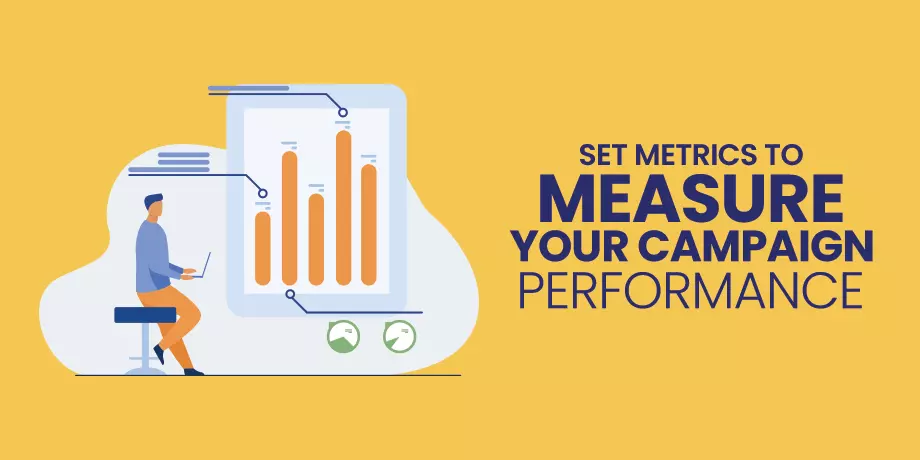
Great, now that you have defined your campaign goals, it's time to determine the right metrics that will help you measure your goals.
Let us go over some pointers which are necessary to consider when you select your metrics:
Be precise
At the end of your influencer marketing campaign, if you want a higher revenue for your brand, then lay down your desired growth in dollars or by percentage.
Define a time duration
For example, if you want to increase traffic flow to your social media handle, set a precise time frame for achieving your objective.
Achievable target
Your influencer marketing campaign is on the trajectory of failure if you set goals out of your reach due to your limited capabilities and resources. Stay within your lane, set realistic goals no matter how small they are.
It is possible to measure goals by a single metric, but there are also ones that demand multiple metrics for measuring performance.
To make sense of the matter, let us take an example. Let's say the outcome you expect from your influencer marketing campaign is generating more awareness of your brand. Tracking a single metric like impression won't help you gauge your influencer marketing endeavour.
To get a much broader picture of your campaign performance, you need to consider additional metrics like click-through rates, mentions, growth in followers, and engagement rate.
If this is your first venture into influencer marketing and you have no clue about the metrics you need to track. Then we suggest looking at other marketers in the field that have a high track record. Engagement rate is the most utilized metric by many marketers; clicks take the second spot and are closely tailed by Impressions and conversions.
3. Set Goals and Performance Metrics For Your Influencers
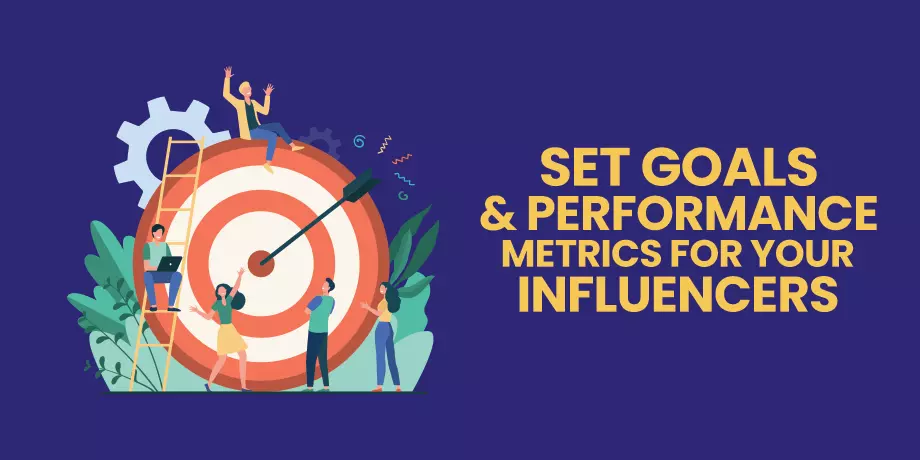
The term influencer marketing says it all. The task of achieving your campaign objective lies with your chosen influencers, and marketing campaigns have many working towards a common goal.
The money you spend should give you desired results; hence when partnering with multiple influencers, it is essential to measure the performance of each one of them.
You can seek assistance from influencers for your future campaigns if they live up to your expectations. As for underperformers, you need to let them go so that your resources can be better utilized.
The targets that you set for your Influencers should correlate with a campaign goal. For example, if you aim to generate more revenue at the end of the campaign, you need to set minimum revenue targets for each of your influencers within a specified time frame.
Below are some of the standard influencer metrics:
Impressions
The metric Impressions denotes the total number of times your posts, web page, or digital content are viewed by your audience.
Click-through rate
The digital marketing metric of Click-through rate is the ratio between total Impressions and the total number of clicks on your search/display ads, email marketing or other online campaigns. This metric is used to determine the effectiveness of your content.
Rate of engagement
The engagement rate on your post is derived by dividing the sum of all viewers who liked or commented on your content by the total number of content available on your handle.
Conversion
Conversion is a term used when a user takes action with the purpose of completing your goal. For example, if your goal is to earn sales revenue, then purchase is the action taken by the visitor. Conversion rate is the percentage of your total visitors that converted on your goal.
Concerning your brand goals, conversion can be anything you want:
- Online sales
- Lead Generation
- Newsletter signup
- Form submissions
User-generated content
As the name suggests, user-generated content can be anything that is produced by your audience featuring your product or services.
There are certain perks associated with UGC:
- UGC gets you added authenticity and credibility.
- Reduces the cost of new content creation.
- Puts your brand in front of more eyes.
- Unique content.
4. Finalize a Tool To Track Influencers performance
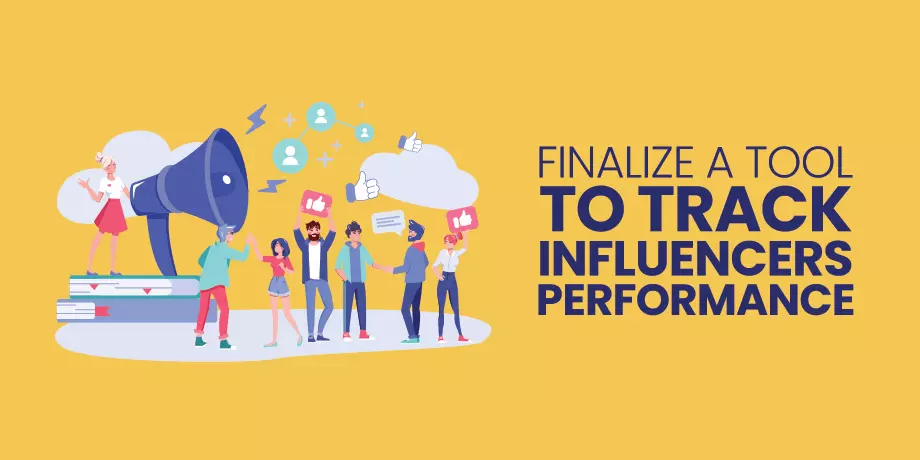
You can manually keep track of campaign performance when you need to monitor only a single metric. On the other hand, Influencer marketing campaigns that focus on multiple metrics may need to seek assistance from tracking tools. Also, one added advantage of automating your task is that now you are left with more time in hand to address other imminent l tasks.
What tool should I start with? - Well, we can suggest some standard tools used by marketers, but at the end of the day, the decision to use them lies with you.
Google Analytics
Any marketer who has been in the game for a long time will know the importance of Google's very own analytic tool. Google Analytics is a handy tool to have even if you are not venturing into influencer marketing. GA is a free product that brings all your business data to one dashboard. What's more, the user interface is easy to use with little practice.
We urge you not to make the mistake of thinking that Google analytics is only viable when capturing data associated with your website traffic.
Google has come with the concept of campaign tagging that allows you to track your campaign in Google analytic. You are needed to set parameters on your post URL before uploading.
The five tags that you can apply to your post are as follows
- utm_campaign
- utm_medium
- utm_source
- utm_content
- utm_term
Once you attach the above parameters to your post, you can track the source of your traffic, total clicks, total impressions, goal conversions, costs incurred, and monitor each influencer's performance.
Grin
Grin has a definite set of key performance indicators and enables you to monitor your campaign's performance based on metrics like sales revenue, return on investment, goal conversions, engagement rate, cost per click or Impressions etc. This tool also scrutinizes each influencer and post concerning the KPIs.
NeoReach
NeoReach is tracking software that comes with an in-built reporting feature. Concerning your campaign, this platform shows you everything that is happening in real-time. The metrics that you can track include engagement rate, the total number of impressions, cost incurred per engagement or per impression and return on your investment. You can also monitor the performance of individual influencers and posts.
5. Analyze the Performance of Influencers
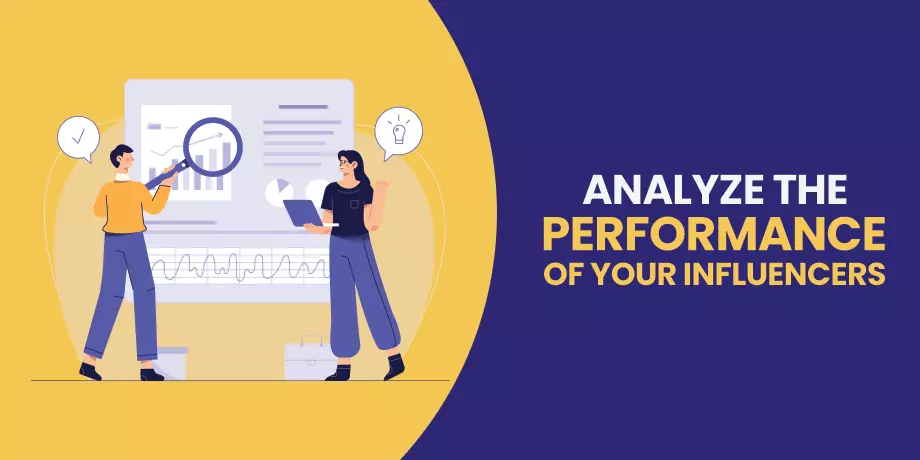
While measuring the overall performance of a marketing campaign is preferred by most brands, we advised you to dig deeper and examine how each of your influences has contributed to your end goal. Monitor influences performance every step of the way. Collect performance matric data on each of your Influencers and compare them with one another.
To compare influencer data, follow the below steps:
Specific URL
From the get-go, provide a custom URL to each of your influencers. This is the URL that they can embed in their blogs or social media posts.
Unique discount code
Another way to measure performance is by providing a unique discount code to each of your influencers. Use this method if your goal is to achieve increased sales from your influencer marketing campaign.
How to maximize ROI
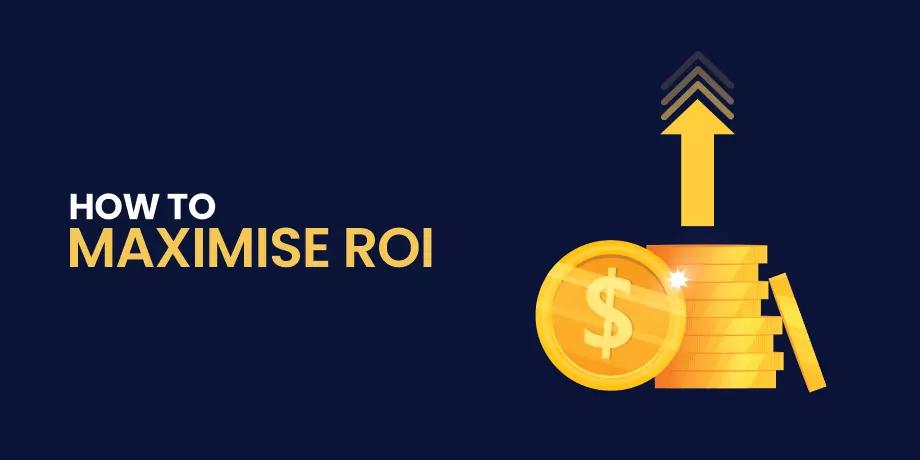
Plan for ROI
Before jumping into influencer marketing, always know what you want to measure, how you want to measure, and when you want to measure. Well-established steps will lead you to your goal. As per the State of marketing report, 82% of marketers want to count all campaigns, but only a third can effectively evaluate ROI. Additionally, only 48% of marketers use analytics tools to measure campaigns. Look at your past and present data and generate a detailed plan; install analytics – configure analytics to track your goals. Identify a Key Performance Indicator so that at every step, you know you are reaching your goal.
Never consider Vanity Metrics.
Never focus on metrics that do not help achieve your final goal – they make your marketing campaigns look vibrant and pleasing. Do not consider the number of followers gained If your end goal is to get customers to purchase your product. You have to instead focus on metrics like total web traffic or conversion rate. Looking a vanity metrics eats away at your time and efforts without actually producing any results. Correct data will empower you to make the right decisions.
Trial and error
Do not be afraid of trying out different strategies. Continuous testing can reveal alternatives that can get better results. Do spit testing, apply one approach to one half of your audience and a separate process to the other half of your audience – comparing the result should tell you which one worked the best. Undertake test multiple times. A software provider ‘Telestream’ saw a 300% increase in revenue with the help of analytics. The company did conversion rate optimization testing that revealed significant findings. Set aside a small portion of your budget for testing, focus on improving a single aspect of business until you can’t go any further. Discard failed experiments.
Report Analytics
Always disclose your campaign analytics – this is important for the success and growth of your business. Report from analytics empowers your staff to make necessary decisions. Your influencer marketing ROI is dependent on how you create and apply your strategies. Also, do not focus on data that is of no value. Define what data you have to collect, form a panel that follows up after the analytics report. You can significantly increase sales at a lesser cost with proper planning and decision-making.
I hope you found this as a useful guide to measure and maximize the ROI of your influencer marketing campaign.
Feel free to share!